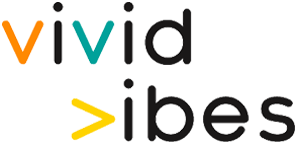#Article
Culture-Fit Organizational Charts in Service Offerings
By: Stella Kavali
By definition, an organizational chart is a diagram that shows the structure of an organization and the relationships, and relative ranks, of its parts and positions. Traditionally, it shows the roles of the organization, how those roles relate to one another, the authority structure associated with those roles (who reports to whom), and often—but not always—the individuals that fill those roles.
For a firm to operate successfully, the organizational chart must primarily portray the firm’s purpose and be built around its culture, in order to have true functionality. Unfortunately, it is often included to graphically represent seniority or for status purposes. In some cases, it is kept in the CEO’s drawer, rendering it useless.
As far as Vivid Vibes is concerned, our savvy business clients understand that a culture-fit focused organizational chart keeps every department accountable and aligned with the company’s purpose. It encourages a flow of internal processes and information between divisions, while promoting the company’s culture and good decision-making.
We are repeatedly asked to consult firms whose organizational charts fail to clearly portray relevant roles, relations and authority structures. In turn, this leads to grey areas, fuzzy reporting, and the prioritization of individuals—instead of the company’s culture and purpose.
Cultural Depictions: From ‘My Life Sucks’ to ‘Life is Great’
In terms of company culture, organizations that greatly rely on specific individuals are often characterized by personal dominance. Silently encouraging the idea that personal accomplishment is of paramount importance to getting ahead—while failing to genuinely promote teamwork—is surely a ‘disaster’ bound to happen. This becomes more apparent on ad hoc service offerings, or anytime something needs to be addressed outside regular tasks—like in a moment of crisis. Of equal importance is the fact that, unless an organizational chart provides for a clear structure of the roles and relationships involved (but beyond individuals), we not only risk losing our structure–purpose alignment but also neglect to provide for sufficient succession planning in our management team and beyond. This also affects the correct use of the assessment and evaluation processes, as well as training and development plans that have been put in place.
Conventionally, organizational charts are aimed at siloing people into departments such as HR, IT, Sales and Marketing, etc. This results in a ‘random’/ ‘intentional’ experience customer focus; in order to be truly useful, the best charts should support a company’s culture—this we share as our overall consulting goal!
Moreover, traditional top down organizational charts usually encourage upward communication, as all decisions and potential conflicts flow upwards, with employees feeling unmotivated to communicate good ideas with their peers in other parts of the company. With internal competition and cannibalization being commonplace, it gets more and more difficult to establish a permanent ‘life is great’ organizational culture mindset and ‘branded experience’ service offering.
Last but not least, in order to truly adopt a culture-fit approach and prevent competing priorities, we need to do more than break the silos throughout the organizational charts. We need to ensure that our company culture focuses on the customer, and that all company processes keep the customer ‘holistic’ experience in mind. This is truer now than ever before.
Post-Covid Opportunities for Change
Living through such unprecedented times is not only extremely hard for employers and employees alike, but it presents a great opportunity for leading companies to embrace change and move forward to a new era—in more complex ways than simply introducing teleworking into the realm of ‘normality’.
Based on historical data from big downturns, one can surely estimate—for example—an increase in customer expectations in services; this will lead to even more ‘demanding’ consumers. This power shift puts service offerings right in the center of a more value-creating narrative—the ‘branded experience’. Mobilizing your whys and whats and finding your true business purpose, together with social responsibility for both internal and external audiences, consequently becomes of paramount importance. This is especially true at times when even the most financially stable companies might need to make hard personnel decisions—when it comes to who to promote, keep or let go.
Paradigm Shift: Can’t be Done Overnight
As our business clients know—through our one-pager culture deck exercises—truly embracing the company’s purpose is more complicated than it sounds. The same goes for moving towards a culture-fit organizational chart; it simply can’t be done overnight!
When you are redesigning your organization for whatever reason, you focus first on taking small steps towards finding your purpose, putting the right processes in place, and creating a ‘life is great’ team culture. Your focus should not simply involve reassigning employees from one department to the next, bringing in high-flyers or merely creating a new job title and putting one’s name under it. All that obviously needs to happen too, because we need roles, structure, and clarity—but it is simply not enough.
To begin redesigning an organizational chart, you should also focus on learning how to ask the correct questions, such as ‘Why are we in business? What is our purpose?’ Cultural changes need to be addressed, and processes must be developed to support the new holistic paradigm shift—before they are implemented and captured on the new culture-fit organizational chart that promotes a service offering of care, excellence and devotion.
